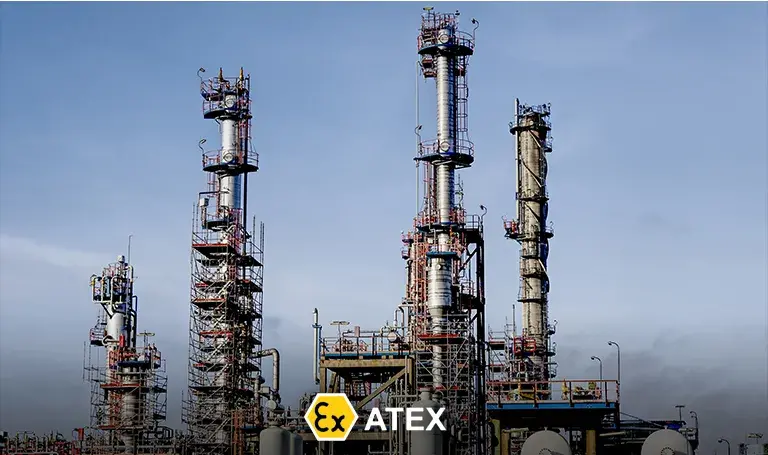Complying with ATEX standards in hazardous environments. Why does it matter?

Manufacturing facilities are no less than war zones – they have difficult workplace conditions like explosive atmosphere, flammable & toxic gasses and combustible substances. A few more hazardous than others are like Oil & Gas, Petrochemical, Chemical plants & Power plants. Such a high-risk workplace environment is safeguarded by mandatory health & safety risk assessments, certifications, safety gear, rules & regulations. It ranges from what kind of devices can be used on-site to the gear worn by the workers.
An ATEX certification for your equipment can be a gamechanger. This article tried to address the most common questions around ATEX certification.
What is an ATEX Certification?
ATEX stands for ATmosphere EXplosible.
It certifies equipment & protective systems intended for use in potentially explosive atmospheres. It categorizes equipment based on its protection against turning into an active ignition source. Here are the two European Directives for certifying equipment that is declared ‘intrinsically safe’ in the explosive atmospheres:
- Directive 1999/92/EC (also called ‘ATEX 153’ or the ‘ATEX Workplace Directive’)
- Directive 2014/34/EU (also called ‘ATEX 114’ or ‘the ATEX Equipment Directive)
- Zone 0 – A place where a potentially explosive atmosphere is present continuously or for long periods.
- Zone 1 – An area in which a potentially explosive atmosphere is likely to occur occasionally.
- Zone 2 – A place where a potentially explosive atmosphere is not expected to occur usually, but if it does happen, it will persist for a short period only.

Identifying an ATEX certified Equipment
If equipment has an official ATEX certification, it has been completely certified to be safe for being used in hazardous/explosive atmospheres. ATEX approved equipment can be identified by the official ‘Ex’ logo shown in the image above.
Any equipment without Atex certification must not be brought onto site in manufacturing facilities with an explosive atmosphere to prevent any probability of disasters.
Why is ATEX Certification challenging to achieve?
For a product to be ATEX certified, it must undergo rigorous tests quality checks for weeks & even months in various test conditions. Even after the certification is processed, quality assurance, compliance checks, and audits are conducted to ensure that the product complies with the stringent benchmarks.
Once the certification is provided to a product, even a tiny tweak or alteration to the product in any form can render the certification null & void.
Is an ATEX Certification applicable across the globe?
Although initially constituted by the European Union for its member states, the ATEX certification is slowly gaining global acceptance as a preferred standard for accepted devices in potentially explosive atmospheres. OEMs with ATEX Certifications now find interested buyers even outside the EU, and it is predicted that it may one day become the globally accepted standard.
Conclusion
If you are looking for equipment to be used in a plant with a potentially explosive environment like the industries mentioned above, then looking up an ATEX certification first will go a long way in finding reliable equipment.
At Infinite Uptime, we very well understand the importance of HSE initiatives in manufacturing and how every small bit of diligence is critical to ensuring a risk-free environment & safety of the workers. To this end, we are delighted to share that vEdge, our edge computing technology that enables our Diagnostics Service, has received a Zone 0 ATEX Certification from the International Centre for Quality Certification (ICQC LLC), Latvia. Here is the ATEX-Certification for our vEdge. Want to know more about how vEdge can propel digital reliability even in the most difficult environments?
Reach out to our team at contact@infinite-uptime.com










